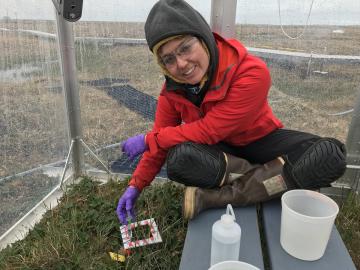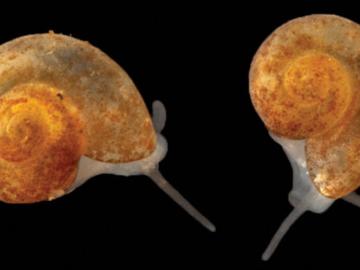
Filter News
Area of Research
- (-) Energy Science (30)
- (-) Neutron Science (13)
- (-) Supercomputing (37)
- Biological Systems (1)
- Biology and Environment (79)
- Biology and Soft Matter (1)
- Computational Biology (1)
- Fusion and Fission (4)
- Isotopes (6)
- Materials (11)
- Materials for Computing (1)
- National Security (6)
- Nuclear Science and Technology (2)
- Quantum information Science (1)
News Topics
- (-) Bioenergy (15)
- (-) Biomedical (15)
- (-) Composites (2)
- (-) Environment (32)
- (-) Frontier (17)
- (-) Space Exploration (3)
- 3-D Printing/Advanced Manufacturing (24)
- Advanced Reactors (2)
- Artificial Intelligence (24)
- Big Data (16)
- Biology (11)
- Biotechnology (2)
- Buildings (12)
- Chemical Sciences (5)
- Clean Water (5)
- Computer Science (50)
- Coronavirus (14)
- Cybersecurity (7)
- Energy Storage (21)
- Exascale Computing (16)
- Fossil Energy (2)
- Grid (13)
- High-Performance Computing (25)
- Hydropower (1)
- Isotopes (1)
- Machine Learning (10)
- Materials (13)
- Materials Science (17)
- Mathematics (3)
- Mercury (1)
- Microelectronics (1)
- Microscopy (4)
- Nanotechnology (7)
- National Security (4)
- Neutron Science (57)
- Nuclear Energy (5)
- Partnerships (4)
- Physics (5)
- Polymers (2)
- Quantum Computing (11)
- Quantum Science (12)
- Security (5)
- Simulation (12)
- Software (1)
- Summit (23)
- Transportation (20)
Media Contacts

Ada Sedova’s journey to Oak Ridge National Laboratory has taken her on the path from pre-med studies in college to an accelerated graduate career in mathematics and biophysics and now to the intersection of computational science and biology

While some of her earth system modeling colleagues at ORNL face challenges such as processor allocation or debugging code, Verity Salmon prepares for mosquito swarms and the possibility of grizzly bears.

In the race to identify solutions to the COVID-19 pandemic, researchers at the Department of Energy’s Oak Ridge National Laboratory are joining the fight by applying expertise in computational science, advanced manufacturing, data science and neutron science.

Sometimes conducting big science means discovering a species not much larger than a grain of sand.

A versatile class of flexible, protein-like polymers could significantly advance future drug delivery methods. But first, scientists have to develop a reliable process for tailoring these polymers into shapes that can effectively transport medicines throughout the human body.

Biological membranes, such as the “walls” of most types of living cells, primarily consist of a double layer of lipids, or “lipid bilayer,” that forms the structure, and a variety of embedded and attached proteins with highly specialized functions, including proteins that rapidly and selectively transport ions and molecules in and out of the cell.

Scientists at the Department of Energy’s Oak Ridge National Laboratory have developed a new method to peer deep into the nanostructure of biomaterials without damaging the sample. This novel technique can confirm structural features in starch, a carbohydrate important in biofuel production.

Each year, approximately 6 billion gallons of fuel are wasted as vehicles wait at stop lights or sit in dense traffic with engines idling, according to US Department of Energy estimates.

As the second-leading cause of death in the United States, cancer is a public health crisis that afflicts nearly one in two people during their lifetime.

Researchers have developed a new process that could make it much cheaper to produce biofuels such as ethanol from plant waste and reduce reliance on fossil fuels.


